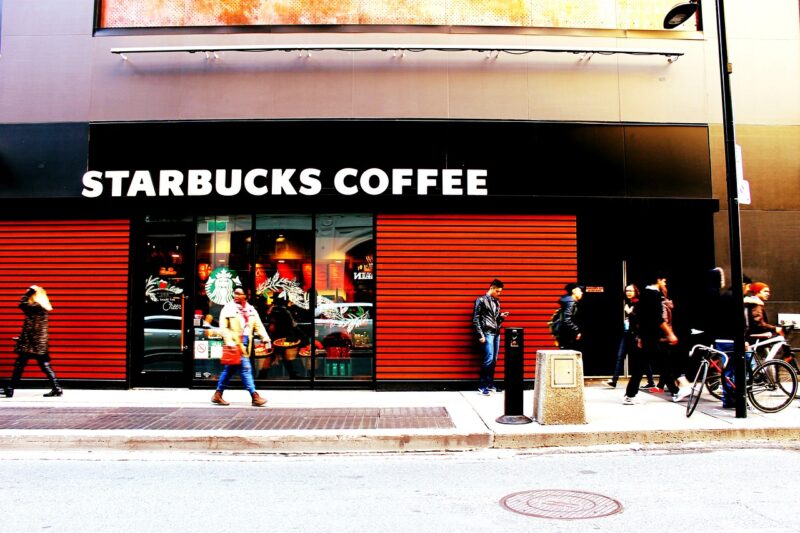The Starbucks Phenomenon: How a Coffee Shop Became a Lifestyle Brand
November 14, 2024

Starbucks has transcended its role as just a coffee shop; it has morphed into a global lifestyle brand that represents community, quality, and a space for connection. When Howard Schultz opened the first Starbucks store in Seattle in 1971, he envisioned a place where people could gather over high-quality coffee. Fast forward to today, and Starbucks has become synonymous with coffee culture, creating a loyal customer base around the globe.
1. The Early Days of Starbucks
The story of Starbucks began when three college friends—Jerry Baldwin, Zev Siegl, and Gordon Bowker—opened the first store in 1971, originally selling whole beans and coffee-making equipment. It was only when Schultz joined the company in 1982 that the vision for a coffee shop as a community hub began to take shape. Inspired by Italian coffee culture, he sought to create a space where customers could enjoy their beverages in a comfortable and inviting atmosphere.
In 1984, Schultz took a trip to Milan, where he developed a passion for espresso bars and realized the potential of not just coffee but also the experience surrounding it. This pivotal moment catalyzed the Starbucks we know today.
2. Creating the Experience: More Than Just Coffee
In 1996, Starbucks opened its first store outside North America, in Tokyo, marking the beginning of its international expansion. But what was key to the Starbucks experience was not just the coffee; it was the “third place” concept—somewhere between home and work. Schultz believed that Starbucks could be a gathering space for people, not just a quick stop for coffee.
Here are elements that contributed to shaping the Starbucks experience:
- Atmosphere: The warm colors, cozy seating, and inviting aromas create a relaxing environment encouraging customers to linger and connect.
- Community Engagement: Starbucks has invested heavily in fostering a sense of community. From local art displays in stores to community service initiatives, they work to create a bond with their customers.
- Customization: Offering numerous options for customization allows customers to craft their own experience, making their beverage feel personal and unique.
- Barista Training: The role of the barista at Starbucks is more than just a job; it’s a craft. Extensive training ensures every drink is made to perfection, creating confidence in brand quality.
Together, these elements coalesce to create not merely a transactional relationship, but an emotional connection between the customer and the brand.
3. The Power of Branding and Marketing
One of the keys to Starbucks’ success has been its standout branding and marketing strategies. The iconic green siren logo is recognized worldwide.
Starbucks has also utilized effective marketing strategies to engage customers:
- Social Media Engagement: With millions of followers on platforms like Instagram and Twitter, Starbucks effectively communicates promotions, seasonal drinks, and community involvement, creating buzz and customer loyalty.
- Seasonal Offerings: Limited-time offers, especially during the holidays, create a sense of excitement and urgency among customers. Who could resist the allure of a Pumpkin Spice Latte every fall?
- Loyalty Programs: Starbucks Rewards meticulously nurtures customer loyalty and provides personalized offers, enhancing the overall customer experience while driving visits to stores.
Through these strategies, Starbucks has managed to maintain not only brand consistency but also deep emotional ties with its consumers.
4. The Expansion into a Lifestyle Brand
As Starbucks continued to grow, it began to innovate beyond coffee. The introduction of merchandise like their range of cups and coffee-making equipment allowed customers to bring a piece of the Starbucks experience into their homes. This expansion into lifestyle extends to how they present their brand as a lifestyle choice:
- Sustainability Initiatives: Starbucks has set ambitious sustainability goals to resonate with environmentally-conscious consumers, including initiatives aimed at ethical sourcing and waste reduction.
- In-Store Experience: Beyond coffee, stores feature community events, local art, and food offerings, reinforcing the brand as a cultural experience rather than just a retail chain.
- Partnerships and Collaborations: Collaborating with brands like Spotify for curated in-store playlists adds an additional layer of engagement, turning visits into multisensory experiences.
The Starbucks brand has become synonymous with a lifestyle choice, blending quality products with cultural experiences.
5. Lessons from the Starbucks Phenomenon
Starbucks has set a powerful example for companies looking to build a lifestyle brand. Here are key takeaways from their success:
- Prioritize Customer Experience: Investing in an inviting atmosphere and outstanding customer service can turn a fleeting visit into a lasting relationship.
- Build a Strong Brand Identity: A memorable logo and cohesive brand messaging foster recognition and loyalty.
- Embrace Innovation: Adapting to new trends and customer preferences ensures long-term relevance.
- Engage with the Community: A local connection can solidify your brand’s position in a global marketplace.
Starbucks serves as a case study for any entrepreneur considering the transition from mere commerce to creating a lifestyle brand. The journey is as much about understanding consumers’ emotional needs as it is about providing quality products.
Conclusion
Starbucks is no longer just a coffee shop; it’s a phenomenon that has woven itself into the fabric of modern life. By combining quality coffee with a unique customer experience, it stands as a testament to how understanding lifestyle preferences and community engagement can transform a brand. The Starbucks journey illustrates that building not just a product but an overall experience fosters loyalty and emotional connections, ensuring sustainability in a competitive market. As Starbucks continues to innovate and adapt, the lessons it teaches about brand development and community building will remain relevant for years to come.








